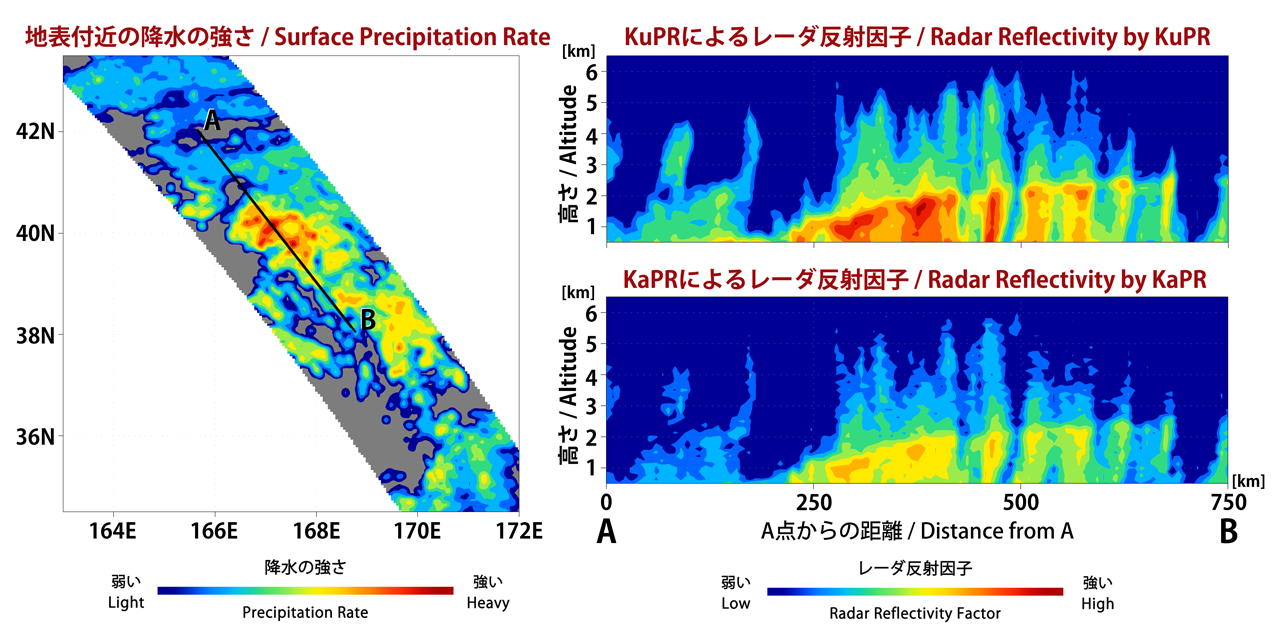
The Dual-frequency Precipitation Radar observes rainfall and snowfall that occurs within clouds in three dimensions, across the surface of the Earth and upward into the atmosphere.
An extra-tropical cyclone was observed over the northwest Pacific Ocean off the coast of Japan on March 10, 2014.
The graph on the left shows the extra-tropical storm seen by the DPR as the satellite passed overhead. The x-axis is the east-west longitude and the y-axis is north-south latitude. The colors show the rain rate at sea-level, with more intense rainfall represented by red and lighter precipitation shown in blue. The line from A to B shows the location of the two cross-sections on the right.
The two sections on the right show the side-view of the storm from the surface, up into the atmosphere. This shows scientists the distribution of different precipitation types within the storm in three dimensions.
The colors show the radar reflectivity, the type of data returned by the DPR instrument that is interpreted by scientists analyzing the data and then used to calculate rain rates. The x-axis shows the distance in kilometers from point A in the lefthand graph. The y-axis shows height above the ocean in kilometers. The top image is the Ku-band radar frequency that is more sensitive to heavy and moderate rainfall. The bottom image is the Ka-band radar frequency that is more sensitive to light rain and snow. The most notable feature of these images is where the height of the heavier precipitation dips to the ocean surface at about 240 kilometers on the x-axis. This indicates a transition from rain on the right (reds and yellows) to falling snow on the left (blues and greens).
Credits
JAXA / NASA
Keywords

